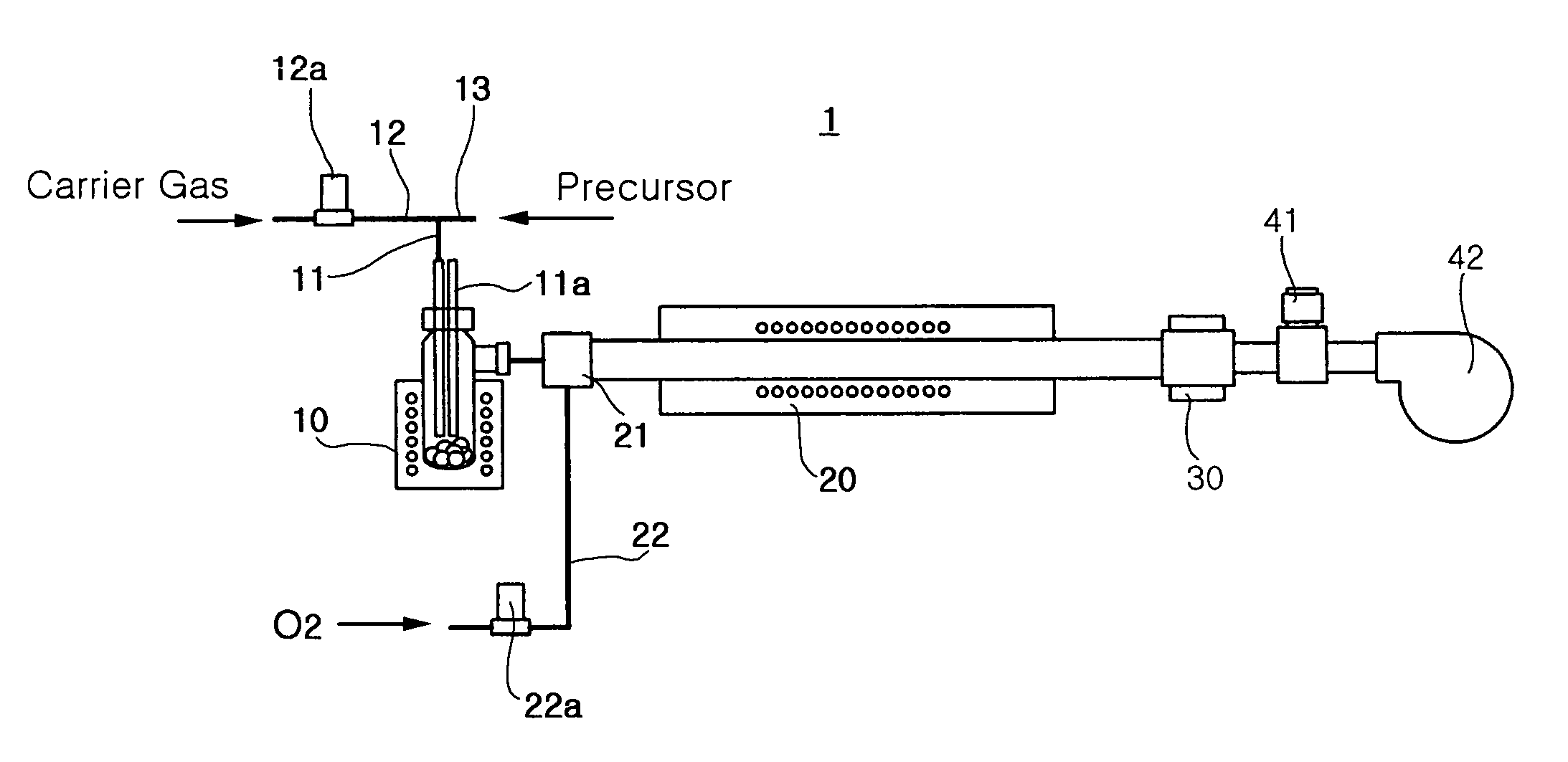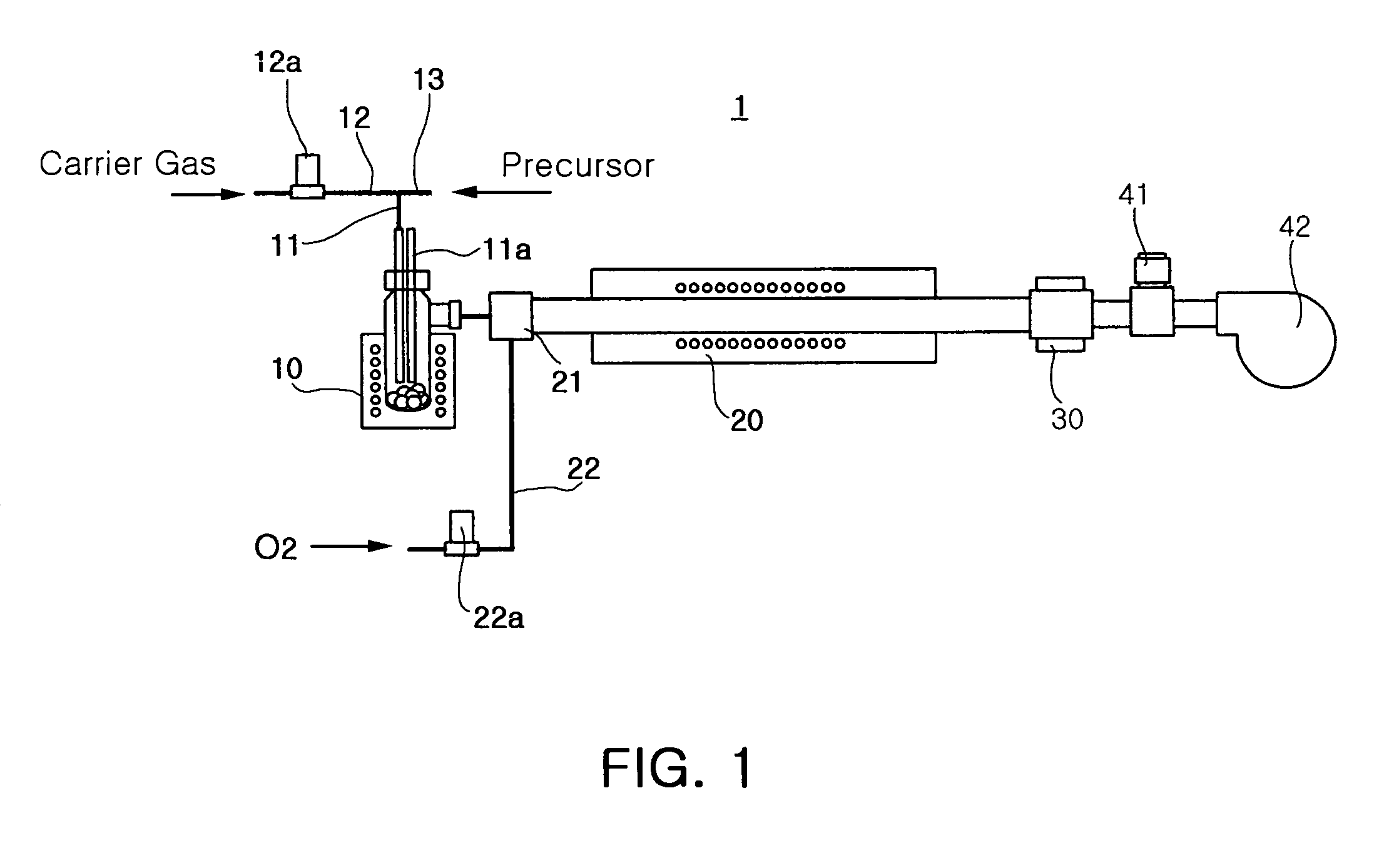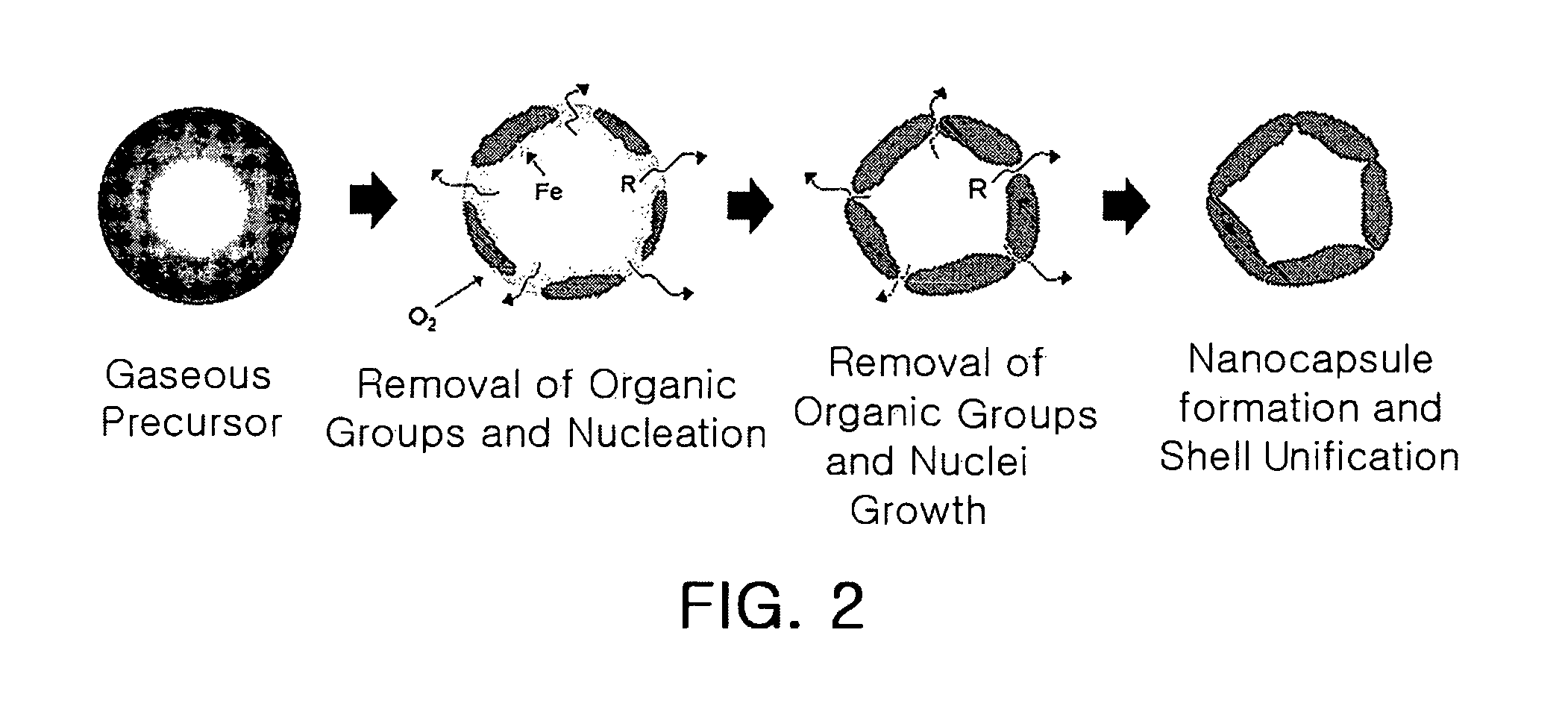Method for manufacturing metal oxide hollow nanoparticles and metal oxide hollow nanoparticles manufactured by the same
a technology of hollow nanoparticles and hollow nanoparticles, which is applied in the direction of aluminium oxides/hydroxides, chromium oxides/hydrates, calcium/strontium/barium oxides/hydroxides, etc., can solve the problems of difficult to improve the properties of conventional metal oxide hollow particles, difficult to change various functional characteristics that are generally obtained, and change in the microstructure of particles, etc., to achieve excellent properties more easily and simply
- Summary
- Abstract
- Description
- Claims
- Application Information
AI Technical Summary
Benefits of technology
Problems solved by technology
Method used
Image
Examples
Embodiment Construction
[0033]Reference will now be made in detail to the exemplary embodiments of the present invention, examples of which are illustrated in the accompanying drawings.
[0034]According to the exemplary embodiment of the present invention, metal oxide hollow nanoparticles are manufactured by a chemical vapor condensation method. Metal β-diketonate is used as a precursor, and a hollow structure of the metal oxide nanoparticles is formed as the precursor is decomposed sequentially. The instability of precursor during decomposition provides a profitable environment that hollow structure can be formed. The instability is determined only when nucleation and growth rate of crystalline phase is faster than the decomposition rate of organic groups from precursor by the sequential decomposition. This sequential decomposition does not take place when other volatile metal organic precursors including organic groups, which decompose concurrently, are used as a precursor. Metal acetylacetonate is the des...
PUM
| Property | Measurement | Unit |
|---|---|---|
| pressure | aaaaa | aaaaa |
| temperature | aaaaa | aaaaa |
| temperature | aaaaa | aaaaa |
Abstract
Description
Claims
Application Information
 Login to View More
Login to View More - R&D
- Intellectual Property
- Life Sciences
- Materials
- Tech Scout
- Unparalleled Data Quality
- Higher Quality Content
- 60% Fewer Hallucinations
Browse by: Latest US Patents, China's latest patents, Technical Efficacy Thesaurus, Application Domain, Technology Topic, Popular Technical Reports.
© 2025 PatSnap. All rights reserved.Legal|Privacy policy|Modern Slavery Act Transparency Statement|Sitemap|About US| Contact US: help@patsnap.com



